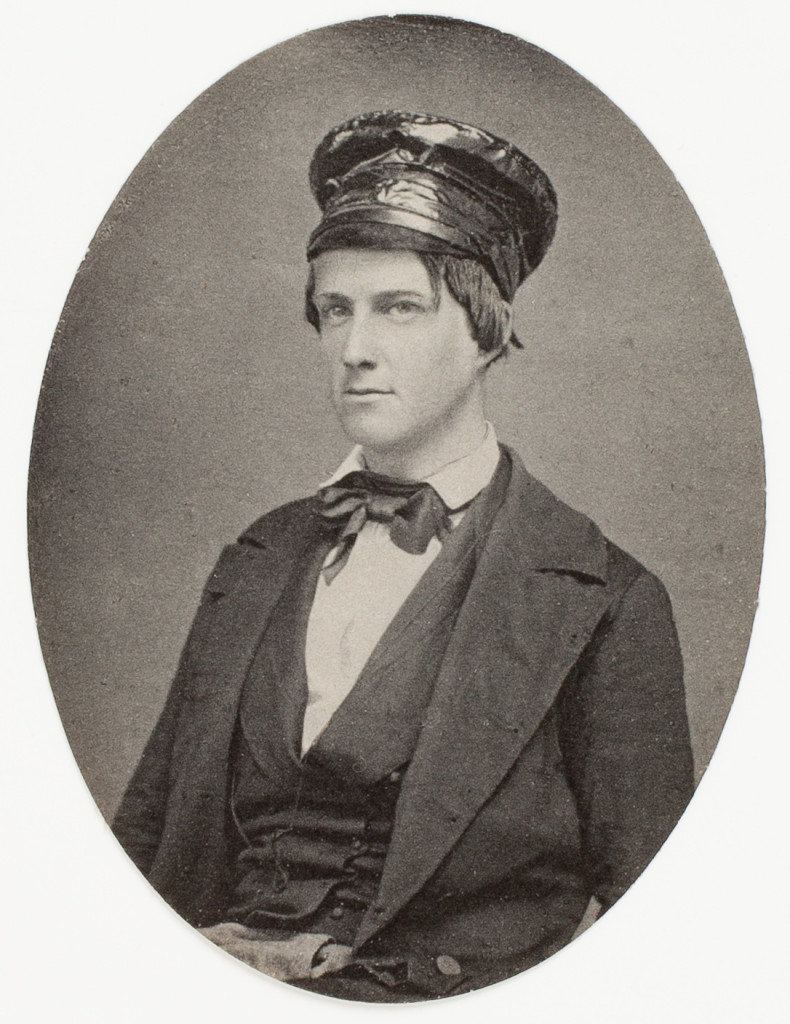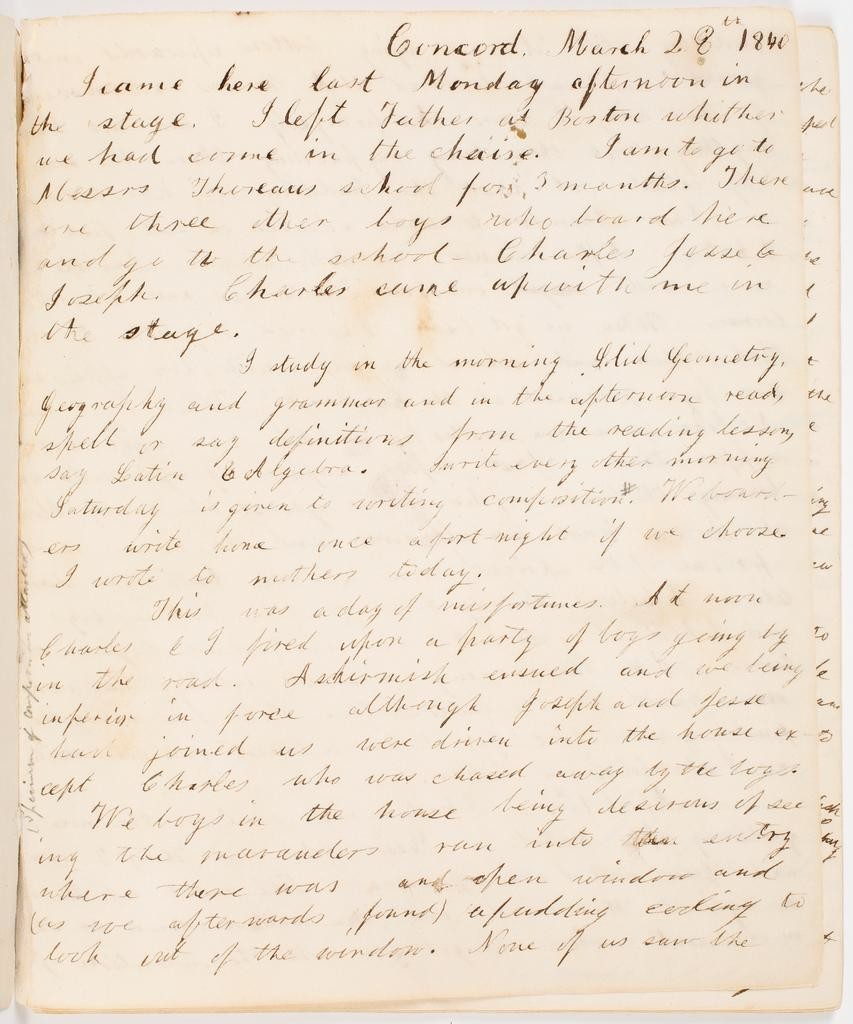 Thoreau scholars have long been aware of the journal kept in Concord, Massachusetts, during a period of seven weeks in 1840 when twelve-year-old Edmund Quincy Sewall Jr. was attending John and Henry David Thoreau’s Concord Academy and boarding in the Thoreau household. One reason Edmund’s journal is of interest is that it contains one of the most detailed surviving contemporary accounts of the school then being run by the young Thoreau brothers. Another reason is that a few months after Edmund’s time at the Concord Academy, first John and then Henry proposed unsuccessfully to Edmund’s eighteen-year-old sister Ellen.
Thoreau scholars have long been aware of the journal kept in Concord, Massachusetts, during a period of seven weeks in 1840 when twelve-year-old Edmund Quincy Sewall Jr. was attending John and Henry David Thoreau’s Concord Academy and boarding in the Thoreau household. One reason Edmund’s journal is of interest is that it contains one of the most detailed surviving contemporary accounts of the school then being run by the young Thoreau brothers. Another reason is that a few months after Edmund’s time at the Concord Academy, first John and then Henry proposed unsuccessfully to Edmund’s eighteen-year-old sister Ellen.
While in Concord Edmund went for walks with the Thoreau brothers, and he was also taken to musical performances and lectures. On March 20, 1840 he wrote, “Went to a lecture from Mr Emerson in the evening. It was on Literature. I was not at all interested. He is a tall man with piercing blue eyes. One of his ideas was that everyone should think for themselves.”

Edmund’s manuscript journal of 1840 was given to the American Antiquarian Society in 1945 but only recently has it become possible to present this diary alongside the three earlier journals Edmund kept between 1837 and 1839 mostly detailing his home life in Scituate, Massachusetts. Two of them are the recent gifts of Edmund’s great grandson Quincy S. Abbot; the other is reproduced courtesy of the Thoreau Society. Together these diaries offer a boy’s eye view of what it was like to grow up in a social circle of New England’s progressive intellectuals and reformers.
The new resource contains images and complete annotated transcriptions of all four of Edmund’s journals, plus three essays he wrote while a student at Concord Academy. Also included is an illustrated introduction by Thomas Knoles, Marcus A. McCorison Librarian and Curator of Manuscripts at AAS.
Next week we’ll explore the journals of Edmund Quincy Sewall Jr. further in Part 2: A New “Portrait” of Henry David Thoreau?

2 thoughts on “New Web Resource: The Journals of Edmund Q. Sewall Jr., 1837-1840”